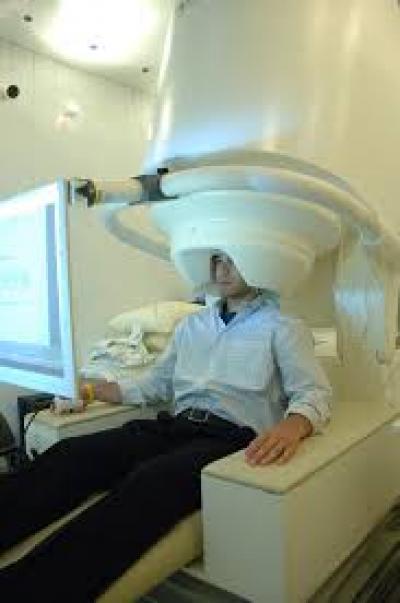A new brain-imaging technique enables people to 'watch' their own brain activity in real time and to control or adjust function in pre-determined brain regions. The study from the Montreal Neurological Institute and Hospital – The Neuro, McGill University and the McGill University Health Centre, published in NeuroImage, is the first to demonstrate that magnetoencephalography (MEG) can be used as a potential therapeutic tool to control and train specific targeted brain regions. This advanced brain-imaging technology has important clinical applications for numerous neurological and neuropsychiatric conditions.
MEG is a non-invasive imaging technology that measures magnetic fields generated by nerve cell circuits in the brain. MEG captures these tiny magnetic fields with remarkable accuracy and has unrivaled time resolution - a millisecond time scale across the entire brain. "This means you can observe your own brain activity as it happens," says Dr. Sylvain Baillet, acting Director of the Brain Imaging Centre at The Neuro and lead investigator on the study. "We can use MEG for neurofeedback – a process by which people can see on-going physiological information that they aren't usually aware of, in this case, their own brain activity, and use that information to train themselves to self-regulate. Our ultimate hope and aim is to enable patients to train specific regions of their own brain, in a way that relates to their particular condition. For example neurofeedback can be used by people with epilepsy so that they could train to modify brain activity in order to avoid a seizure."
In this proof of concept study, participants had nine sessions in the MEG and used neurofeedback to reach a specific target. The target was to look at a coloured disc on a display screen and find their own strategy to change the disc's colour from dark red to bright yellow white, and to maintain that bright colour for as long as possible. The disc colour was indexed on a very specific aspect of their ongoing brain activity: the researchers had set it up so that the experiment was accessing predefined regions of the motor cortex in the participants' brain. The colour presented was changing according to a predefined combination of slow and faster brain activity within these regions. This was possible because the researchers combined MEG with MRI, which provides information on the brain's structures, known as magnetic source imaging (MSI).

This is a patient undergoing an MEG scan.
(Photo Credit: wikipedia)
"The remarkable thing is that with each training session, the participants were able to reach the target aim faster, even though we were raising the bar for the target objective in each session, the way you raise the bar each time in a high jump competition. These results showed that participants were successfully using neurofeedback to alter their pattern of brain activity according to a predefined objective in specific regions of their brain's motor cortex, without moving any body part. This demonstrates that MEG source imaging can provide brain region-specific real time neurofeedback and that longitudinal neurofeedback training is possible with this technique."
These findings pave the way for MEG as an innovative therapeutic approach for treating patients. To date, work with epilepsy patients has shown the most promise but there is great potential to use MEG to investigate other neurological syndromes and neuropsychiatric disorders (e.g., stroke, dementia, movement disorders, chronic depression, etc). MEG has potential to reveal dynamics of brain activity involved in perception, cognition and behaviour: it has provided unique insight on brain functions (language, motor control, visual and auditory perception, etc.) and dysfunctions (movement disorders, tinnitus, chronic pain, dementia, etc.).
Dr. Baillet and his team are collaborating presently with Prof. Isabelle Peretz at Université de Montréal to use this technique with people that have amusia, a disorder that makes them unable to process musical pitch. It is hypothesized that amusia results from poor connectivity between the auditory cortex and prefrontal regions in the brain. In an ongoing study, the team is measuring the intensity of functional connectivity between these brain regions in amusic patients and aged-matched healthy controls. Using MEG-neurofeedback, they hope to take advantage of the brain's plasticity to reinforce the functional connectivity between the target brain regions. If the approach demonstrates an improvement in pitch discrimination in participants, that will demonstrate the clinical and rehabilitative applications of this approach. The baseline measurements have been taken already, and the training sessions will take place over this year.




Comments